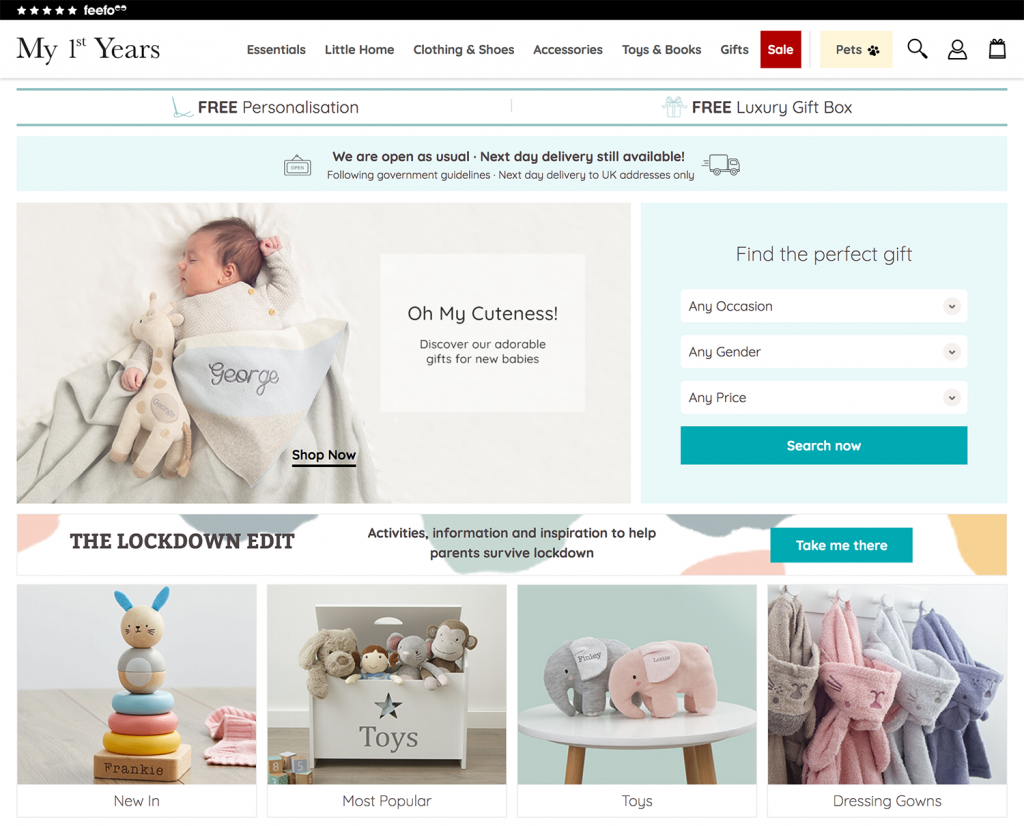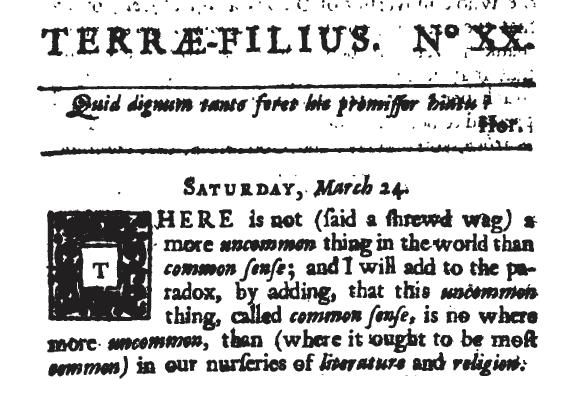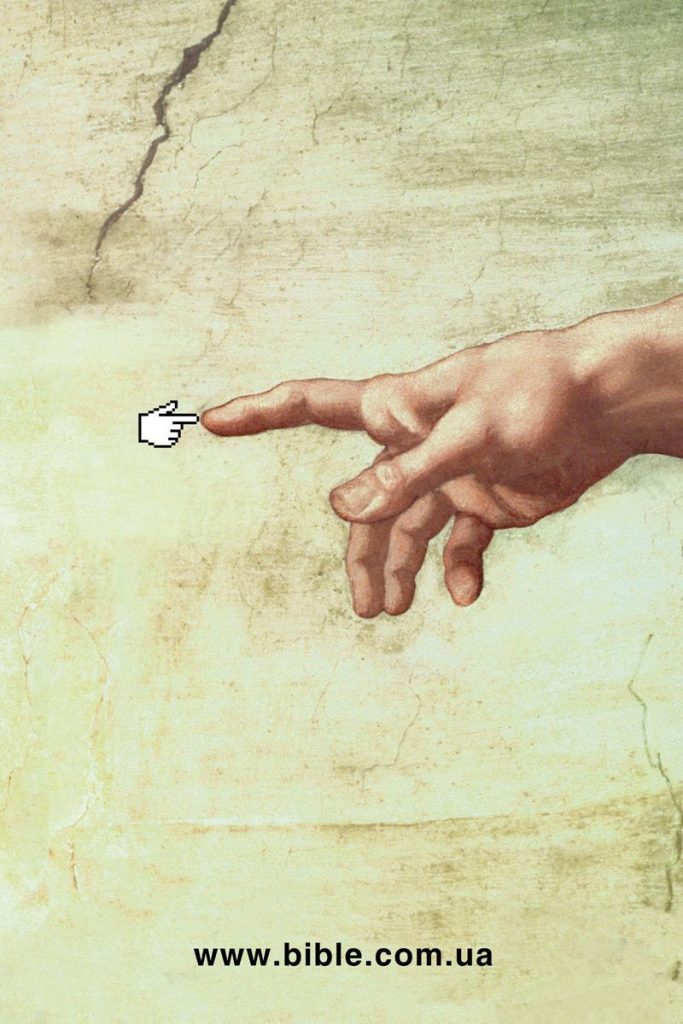Let’s talk about common sense. I’m sure everyone has seen the news, so I’ll skip over the preamble. On a fateful Monday in early May 2020, Dominic Raab told the nation on BBC Breakfast to use common sense to see loved ones outdoors. Many marketers have been watching recent government comms and many of them have ridiculed the lack of clarity. Messaging has never been so important. It is literally a matter of life and death.
I want to talk some more about common sense and what it means in our current context. Common sense as a concept is a strange one if you look closer. The wild assumption that there is a base level of knowledge shared universally is both impossible and unrealistic. The most common usage of common sense is to proclaim the lack of it – a meme for at least a century or three.
Given that no one in recent memory has been through a worldwide lockdown, I think it’s safe to say that there is no such thing as common sense in a pandemic. What was ‘common sense’ for brands feels like has gone out of the window and nobody knows for sure what’s coming next.
Going back to messaging right now, let me paint another picture. This time it’s a Wednesday in mid-March. It’s safe to say everybody was feeling a bit weird. Not to fear, a group of celebrities have come out to release a cover of Imagine to let us know that everything will be okay. Ridiculed and slated all over the internet, NY Times writer Jon Caramanica said it better than I ever could:
“In times of crisis, some think it’s enough to throw something slapdash together, serve it to the world and hope it heals some people. But that’s just not how things work.”
Jon Caramanica, NY Times
So what have brands been doing since then? A lot of them have gone down the same route. The key messages have included (but not limited to):
- “we’re all in this together”
- “unprecedented times”
- “now more than ever”
- “even though we’re apart”
- “in these challenging times”
- “new normal”
Now, I’m not happy or proud to admit this but I know the Microsoft Teams advert off by heart. This isn’t a good thing. (If you are after a chuckle, read the comments on YouTube.)
Messages like the above repeated start to lose their heart (if they had any to begin with) because as a brand, it’s a lot harder to make it seem like you genuinely care, than to just be useful. Another quote I couldn’t put more succinctly:
“The ‘we can get through this’ brands are not the brands who are going to get us through Covid-19”
Ant White, CHE Proximity
Many brands have hit a dilemma. Some aren’t allowed to mention anything by name and instead use thinly veiled innuendos about our times, and others are going down the ‘safe route’ with the pick and mix sympathy phrases above.
Like many others, I’ve been trying to expand my horizons and signed up for a game theory course. From watching one 6 minute video, I can confidently say that the only winning option for brands and their messaging is to forge their own path. That is to say, acknowledge the circumstances, but circumstances are not the message. The foundation of your message is your brand strategy. I’ve shown my working below:
Scenario 1:
You do nothing, so does everyone else -> Everybody loses
You do nothing, everyone else does Coronavirus clichés -> You lose, They ‘win’
Scenario 2:
You do a Coronavirus cliché, Everyone else does nothing -> You ‘win’, They lose
You do Coronavirus cliché, so does everyone else -> A level-ish playing field
What’s the best outcome? If you do a cliché and everyone else does nothing, but that’s not very likely. Everyone else has already jumped in with clichés. According to Marketing Week, 45% of companies are changing advertising and content to make the message more relevant to the current situation, and 48% of marketers say their companies have shifted messaging to emphasise digital products and services. To stay at your current market share, you have to do something else. A lot of people have turned to TikTok with a 400% increase in searches for “how to make a TikTok” since March 1st. From FOMO straight to Oh No?
Steps to find your messaging using uncommon sense:
- Acknowledge the situation.
- Don’t make the situation the message.
- ???*
- Profit
*As a millennial who speaks in 11 year old memes, here is the missing step.
Good messaging is hard to find. How many Coronavirus emails do you personally remember from brands? Did you have an emotional connection with them? Would you have the same answer if you didn’t work in marketing? Answers on a postcard.
This brings me to another dilemma. The dilemma of ‘work you’ and ‘home you’ – two different people. I see this in myself, the ‘work me’ will appreciate a well crafted ad in my email inbox, but come six o’clock I scoff at even the most well-intentioned ads. Good messaging is hard to find. This isn’t as harsh a criticism as it sounds. Most brands we work with don’t target me specifically, I’m not the audience. So we look for answers in the data to see what other people who aren’t me want to see. When you do audience research, sometimes it surprises you, but sometimes it doesn’t. You, as a human, probably have a good idea of messaging you are sick of, and you just ignore most of the time. It’s very difficult to apply that unbiased human outlook when you’re working on your messaging strategy but data is usually a good place to start. If you can’t get your head around it, think about what your parents would say in response? What would your nephew say? What would that lady at the Post Office say? That might help gain a little perspective.
I’ve seen this happen before, the switch from ‘work person’ to ‘person person’ on a call with a client talking about content and messaging. In an offhand comment, the client switched right in front of my eyes, and said, “If I was *the brand audience* I would be feeling *worried about XYZ*”. An eye opening insight and something to keep front of mind in their strategy going forward.
The great thing about digital marketing is that it’s interactive, you can actually put things in front of people to interact with, unlike the TV, radio, and OOH. When you’re saying we’re here to help, you can actually help and put something useful right in front of their mouse or thumb. Links and downloads are more real than ever, from your hand to theirs.
A lot of people are struggling in uncertainty right now, and that’s okay. As a brand, you may not have been through a pandemic before but you may have been through a recession.
Getting your message out there now will have more impact than it will when we’re through the other side. Budgets are being squeezed tight right now and it’s difficult to justify marketing spend. But looking at past recession data gives us an optimistic view. The research has shown, for almost every recession, that budgets that let you share messaging (through Paid Media, SEO, Content etc.) are essential to coming out of a tough time on top. You may not get instant results now, but it’ll pay off later. Make peace with delayed gratification.
An example of messaging below I think works well is Ikea Russia releasing a visual guide on how to build forts at home, seeing as we’re spending a lot more time there.
The reasons why this works for me (even in Russian) include:
- It’s distinctly their brand flavour.
- It’s useful.
- It’s funny.
- It’s not trying to save the world.
Even though the idea might not be unique with Zoopla also doing their own version, each brand has adapted it to fit their brand voice and it makes perfect (uncommon) sense to share.
Messaging isn’t limited to content though, you can take advantage of every inch of virtual real estate you have, especially your website. My First Years have nailed their messaging on their homepage. Doing a spot of mystery shopping can do wonders for any brand that does digital, and we’re going to use it now to show why this messaging works.

Internal monologue start. I’m on the homepage. I’m not sure why I’m here but now that I am, I’m going to browse. I’m instantly met with a banner that assures me deliveries are still happening on schedule. That’s already taken away one barrier from me spending more time on the site. I know that if I choose to buy, then I’ll receive my item as expected. The second thought that I’ll have is probably a moral objection. Are they following government guidelines? The subtitle tells me they are indeed following guidelines so that’s sorted. If I want more information, I click on the banner and I’m taken to a page with more specific COVID-19 information. I’m now free and ready to shop. Casting my eyes down, I see another banner – leading me to a collection of content, designed to help me and my sanity with kids at home. Simple and to the point, it just works. Internal monologue end.
The real test of good messaging is in the sales. What was your last uncharacteristic purchase in lockdown? Their messaging might be quite good and it’s a good place to start looking for inspiration.
Nobody in the world has been in this particular situation before, which can be quite terrifying. But it can also be a comfort. Nobody can claim to have the definitive answer to what will work for you. It’s always good to have a little perspective, recession is coming, but recessions have happened before. Even if this recession is the one to end all recessions, the fundamentals don’t change overnight, defined brand strategy is the way forward.
This lockdown may feel like it’s going on forever, but it is temporary (everything is). When everything feels like it’s changing, take a minute to step back.
Work with your team, look at the data, workshop ideas but most importantly ask the questions:
- Will what you offer change?
- Will how you offer it change?
- Will who buys from you change?
What is staying the same? Your brand voice probably.
Answering these questions will put you on a path to creating a plan that maps the need for your products and services right now. The key takeaway: You probably do need to change your messaging right now, but there are things that will stay the same. Messaging shouldn’t be all about the situation, messaging should make sense for who is buying from you.




